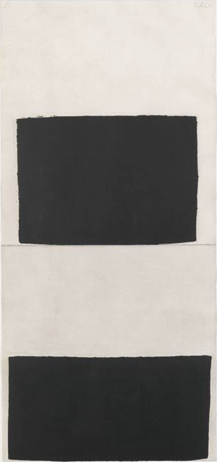Abstract artists often prefer to talk about what they are trying not to do in their work. What you end up with is the equivalent of a photographic negative, a picture of someone in reverse, but this can still be illuminating, since the effect of any abstract art is so closely linked to the nature of its renunciations. The catalogues to Richard Serra's two current exhibitions at the Tate and Serpentine Galleries both contain interviews with the artist, often said to be America's foremost living abstract sculptor; and both read largely like lists of his dislikes. These turn out to be extensive.
Serra wants to avoid, in no particular order: 1) making anything that could be mistaken for ''an interesting object''; 2) ''theatrical effects''; 3) ''imagistic and metaphorical associations'' which ''lead by definition to the dismissal of abstraction by making it needlessly referential''; 4) ''all illusionistic strategies''; 5) ''decorativeness''; 6) ''allusion''; 7) shapes and surfaces that might seem ''too fanciful, too gestural''; 8) colour, except for black, which is ''a property, not a quality''. This seems fairly comprehensive, and it may leave you wondering what (if anything) is left.
It certainly does not sound too enticing. What is this art of anti-theatrical anti-imagistic anti-metaphorical anti-illusionistic non-decorative non-allusive unfanciful black objects going to look like? And what on earth might it have to offer anybody willing to take the trouble to find out?
The Serpentine exhibition, ''Richard Serra: Drawings'', is the first British showing of the artist's graphic work, although it should be said that these are not really drawings in the conventional sense and that they demonstrate little in the way of conventional graphic facility. In fact they are more like paintings, being executed in oily black paint-stick applied thickly to primed canvases. And they are even...

Accentuate the negative
06-10-1992

